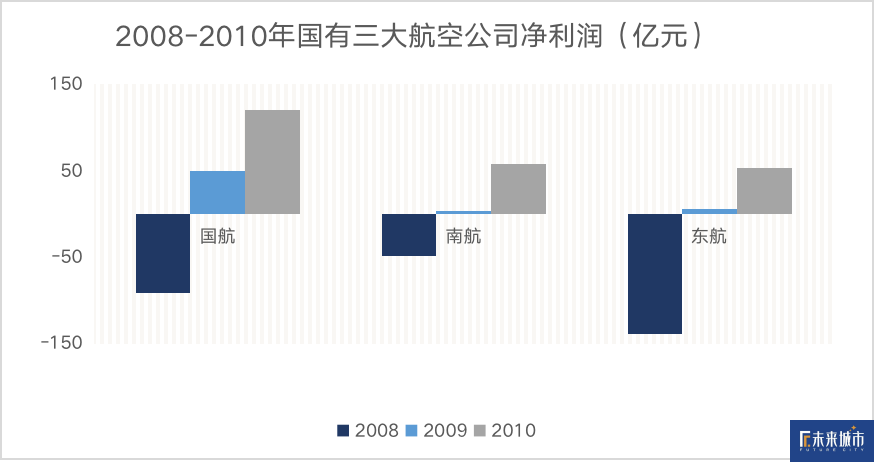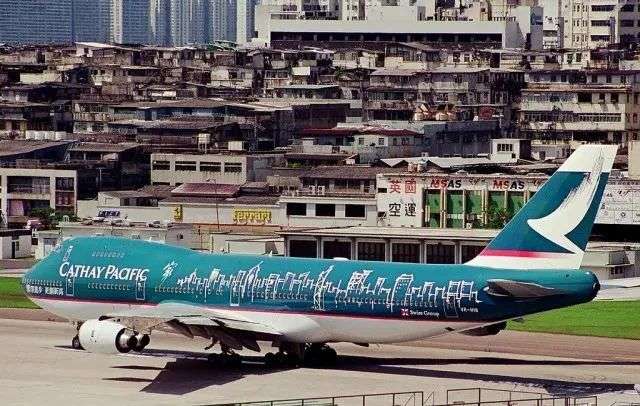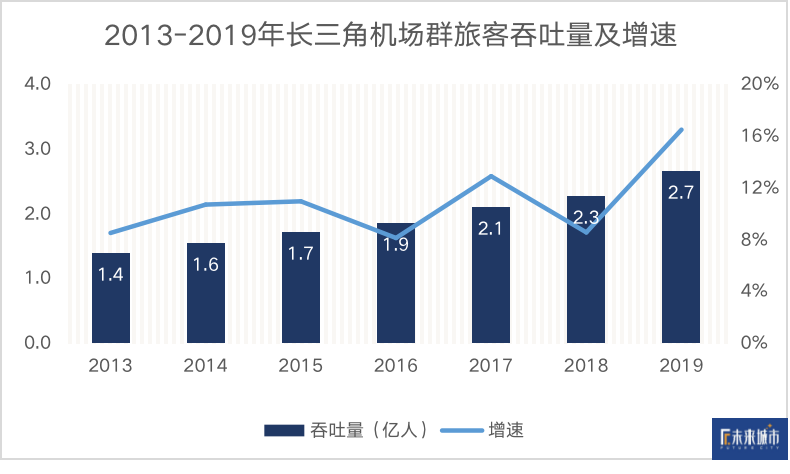8,500 employees were laid off and the Hong Kong government injected 27.3 billion in capital.
Editor’s note: This article is from the WeChat public account “FutureCity” (ID: caijingtod), author: either with hope.
Take a KA flight with a “student benefit” discount to transfer in Hong Kong, which may be an experience many international students have had; Hagen provided exclusively by Dragonair Das also carries the exclusive taste memory of “Returning Home” and “Returning to Hong Kong” in Gang Piao’s heart. On October 21, Hong Kong Cathay Pacific announced the reduction of 8,500 jobs. Its 35-year-old Dragonair ceased operations immediately, and the red “Cathay” remained in Lantau forever. Under the epidemic, Cathay Pacific, the giant that has almost monopolized Hong Kong’s aviation industry, is now struggling.
Airport throughput is an important criterion for measuring regional economic development, and the formation of more and more urban agglomerations puts forward higher requirements on the quality and quantity of civil airports. For example, economist Zhou Qiren stated in an interview in May last year that the airport in each city in the Yangtze River Delta is an important node. Between these nodes, people, funds, information, goods, etc. come and go. Driving the integration of the Yangtze River Delta.
The Guangdong-Hong Kong-Macao Greater Bay Area is also inseparable from world-class airports. In 2019, the GDP of the Greater Bay Area reached 11.62 trillion yuan, the annual passenger throughput of the airport reached 223 million passengers, and Guangzhou Baiyun, Shenzhen Baoan and Hong Kong International Airport all ranked among the top ten in China. Hong Kong Chief Executive Carrie Lam Cheng Yuet-ngor once stated that the Hong Kong Airport is located at the center of the “dual gateways” and assumes the role of a hub connecting the Greater Bay Area with the world.
The Hong Kong International Airport on Lantau Island was completed in 1998 and replaced Kai Tak Airport in Kowloon City District. In 2018, the passenger throughput of Hong Kong Airport reached 74.7 million passengers, ranking eighth in the world and second in China. As the first private airline in Hong Kong, Cathay Pacific has more than half of the market share in Hong Kong’s aviation industry since its acquisition of Hong Kong Express in 2019. It is the veritable “boss” of Hong Kong Airlines.
However, in the same year that Cathay Pacific had more than half of its market share, Hong Kong’s aviation industry saw a 4.2% year-on-year decrease in passenger traffic in 2019. This is just a prelude to the crisis in Hong Kong’s aviation industry. Cathay Pacific recorded the largest loss in history of 9.865 billion Hong Kong dollars in the first half of this year. After accepting the Hong Kong government’s 27.3 billion Hong Kong dollars capital injection, it still failed to regain it.Vibrating the flag drum. In September this year, Lantau Airport hit by the epidemic Almost shut down, passenger traffic in the first nine months was only 8.6 million, a year-on-year decrease of 84.5%. With the suspension of Cathay Pacific’s Dragonair, will the competitive landscape of Hong Kong’s aviation industry change? Facing the other two superpowers in the Greater Bay Area How should Hong Kong Airlines break the fierce competition in the city of Guangzhou and Shenzhen?
1 Airline Dilemma: 2008 VS 2020
This is not the first time the aviation industry has bottomed.
In 2008, the global financial crisis swept through, the flow of people and goods dropped sharply, and the aviation industry had difficulty in capital turnover. The three major Chinese airlinesAir China, Eastern Airlines, and China Southern Airlines lost 27.8 billion yuan in total. In the crisis, the State-owned Assets Supervision and Administration Commission of the State Council made an emergency blood transfusion. In November, China Eastern Airlines and China Southern Airlines received a capital injection of 3 billion yuan; subsequently, China Eastern Airlines received another 6 billion yuan. In 2009, the three major airlines quickly turned losses into profits, creating a miracle in the global aviation industry during the financial crisis.
Hong Kong, which is highly dependent on the financial industry, was hit harder by the tsunami, and the aviation industry has also entered a cold winter. In 2008, Cathay Pacific Airways lost 8.558 billion Hong Kong dollars; in 2009, passenger traffic at Hong Kong Airport plunged 4.8%. However, as the market gradually recovered and the aviation industry emerged from the downturn, Cathay Pacific Airways adjusted rapidly,Loss to profit, passenger transport capacity in 2010 has returned to its pre-crisis level.
However, this crisis is far more severe than it was in the past. Looking back at 2009, the GDP of Mainland China slowed from 14.2% in 2007 to 9.2%, and the GDP of Hong Kong fell from 6.4% in 2007 to -2.9%. In the first half of this year, the GDP of Mainland China fell by 1.6% year-on-year, while Hong Kong’s GDP fell by 9%. %, a record. The Financial Secretary of the Special Administrative Region Government, Chen Maobo, said that the Hong Kong economy has fallen into a deep recession, and the situation is worrying.
With the economic collapse, consumption is weak, trade is damaged, and tourism is bleak. And these are all nightmare of Hong Kong Airlines.
On March 25 this year, Hong Kong began to implement a travel ban, and the mandatory quarantine was extended several times. Since last year, the number of visitors to Hong Kong has dropped significantly, and under the epidemic, the number of visitors to Hong Kong has dropped to a freezing point-in April 2020, there were only 4,125 visitors.
The sharp decline in the number of passengers has frozen the passenger demand at Hong Kong Airport. In June of this year, the number of passenger planes dropped by 71.8% year-on-year. This time, Cathay Pacific had a deficit of nearly 10 billion Hong Kong dollars, setting a record loss in history. Cathay Pacific Chairman He Yili said at a press conference in June this year, “Another option is to let the company go bankrupt. Today, the commercial bond market basically excludes airlines that do not have strong support from government shareholders.” /p>
It can be seen that in the middle of this year, Cathay Pacific is dying.
Under the crisis, the Hong Kong government injected 27.3 billion Hong Kong dollars in an attempt to rein in the brink. This is the first time that the Hong Kong government has invested a huge amount of capital in a private company, which shows the significance of Cathay Pacific to Hong Kong’s aviation industry. However, in the face of an epidemic with no end in sight, can Cathay Pacific rebound and come back to life like 12 years ago?
2 One or two things for Cathay Pacific
Different from the “three pillars” of mainland airlines, Cathay Pacific has always been the only one in Hong Kong’s aviation industry. Before the acquisition of Hong Kong Express, Cathay Pacific’s Dragonair’s market share in Hong Kong’s aviation industry had reached 47%. On July 19, 2019, Cathay Pacific announced that it has completed the acquisition of Hong Kong Express, the HNA-based airline company, to deploy low-cost airline business. So far, Cathay Pacific has more than half of the market share in Hong Kong.
Behind Cathay Pacific are Swire Group and Air China. As early as 1948, Swire acquired Cathay Pacific, which had just been established two years ago, and laid out the aviation business of its commercial empire. In 2006, Air China took a stake in Cathay Pacific, and subsequently increased its share options to nearly 30% in 2009. This time, the Hong Kong government also entered the “blood transfusion” and obtained about 6% of the equity, becoming the fourth largest shareholder of Cathay Pacific.
In 1990, Cathay Pacific took advantage of its rival Dragonair’s loss in an opportunity to cooperate with Swire Group and Hong Kong CITIC Group to initiate an acquisition of it and obtain actual control of Dragonair. Since then, Cathay Pacific’s development has been smooth. In 1997, to commemorate the return of Hong Kong, Cathay Pacific even painted a “Hong Kong Spirit 97”. Later, Cathay Pacific moved from Kowloon to Lantau along with the Hong Kong Airport.
▲Hong Kong Spirit No. 97, Picture Source Network
In the 21st century, despite the oil crisis, the failure of derivatives investment and the economic downturn, it also witnessed employee protests, stock prices plummeting, and huge losses. Cathay Pacific continued to fight back and forth and survived several times.crisis. However, in the fog of this year’s epidemic, Cathay Pacific’s stock price plunged wildly, dropping from 11.5 Hong Kong dollars/share at the beginning of the year to nearly 5 Hong Kong dollars/share.
Unlike the past, this crisis is not a periodic financial turmoil, nor is it an operational issue that only affects one Cathay Pacific company. No one can predict how long the epidemic will continue, and when will the Hong Kong civil aviation aircraft fly out of Lantau Island as frequently as in the past. Recently, Hong Kong Express, a subsidiary of Cathay Pacific, even launched a “1.5-hour round-the-island tour” pseudo-tourism experience in an attempt to recover some of the losses.
The future of Cathay Pacific is still unclear with layoffs, suspension of flights, and asset restructuring. On the other hand, the “Greater Bay Area Aviation” funded by Donghai Airlines has entered the game, and it is expected to make its first flight next year as soon as possible. Perhaps the aviation industry in Hong Kong should change.
3 Fierce competition, world-class city clusters cannot tolerate your breath
In the 56,000 square kilometers of the Greater Bay Area, Guangzhou, Shenzhen, and Hong Kong are lined up. Three top airports compete for the status of the core hub of Guangdong, Hong Kong and Macau. Among them, the Hong Kong International Airport relies on the developed tourism industry and frequent economic and trade exchanges, and has achieved the advantages of diversified passengers and high transfer ratio, and has become an international aviation hub. In 2000, the passenger traffic of Hong Kong Airport ranked only 22nd in the world; in 2018, this ranking rose to 8th.
However, on the other side of the customs, Guangzhou and Shenzhen use Xunlei was too late to catch up. From 2010 to 2019, the passenger throughput of Shenzhen Baoan Airport and Guangzhou Baiyun Airport increased by 98.2% and 79.1%, respectively, while Hong Kong International Airport lags far behind with a growth of 41.4%. In 2018, due to its vast hinterland market, Guangzhou narrowed the passenger traffic gap with Hong Kong to 4.9 million;Hong Kong Airport, which has been hit hard and repeatedly shut down, has been left behind by Guangzhou Airport 200 kilometers away.
Someone once questioned that the distance between the airports of Hong Kong and Shenzhen and the overlapping of routes seem to be duplication of construction. Is the more airports the better? In Suzhou, this issue has been discussed for more than ten years.
In 2004, Lu Deming, then dean of the School of Economics at Fudan University in Shanghai, said that Suzhou should not build an airport, because Shanghai’s Pudong and Hongqiao airports are fully capable of handling Suzhou’s logistics and passenger transport needs. Sixteen years have passed. As the country’s sixth-strongest ordinary prefecture-level city in terms of GDP, Suzhou, without an airport, has fallen into a particularly embarrassing situation. This year, the “own airport” that Suzhou people have been looking forward to is finally included in the national plan, and the airport group in the Yangtze River Delta will add another recruit.
From 2004 to 2019, the total GDP of the Yangtze River Delta region increased from 2.9 trillion yuan to 23.7 trillion yuan, an increase of more than 8 times; with that came increasingly close cross-regional economic and trade activities and tourism With rapid development, the air transport industry has entered a golden period of development. At present, the airport group in the Yangtze River Delta has completed 23One pass uses a civil aviation airport, and the regional passenger throughput reached 2.66 in 2019 100 million people.
In the future, the airport blueprint for the Yangtze River Delta has been rolled out. In May of this year, the “Higher Quality Integrated Development Plan for Transportation in the Yangtze River Delta” was released. It is planned to build 9 new airports in the Yangtze River Delta in the future to further improve the regional air transportation network and create a world-class airport cluster.
▲Picture source: National Development and Reform Commission official website
Despite the fierce competition from high-speed rail in short and medium distances, the nationwide air transportation industry is still accelerating. In 2010, Mainland China replaced Japan and became the world’s second largest economy. Aviation and airport investmentQuick step forward< /a>. In 2012, the National Development and Reform Commission approved the construction and expansion of more than 20 airports. The newly-built airports were concentrated in the western and northeastern regions to help regional economic development.
In the past eight years, the throughput of the Yangtze River Delta, the Greater Bay Area, and the Beijing-Tianjin-Hebei airport group has increased by 105.9%, 50.7% and 48.5% respectively. The air transport industry has become one of the main carriers of competition among the city groups. With the continuous upgrading of the industry, the increasingly close personnel exchanges, and the growing number of high value-added groups and middle-class people, the airport has become an indispensable part of the urban transportation network.
For Hong Kong, which has a very high level of urban development, the importance of air transport is self-evident. The heavy blow to Hong Kong’s aviation industry this time marked the arrival of an inflection point in competition between the Greater Bay Area and the Greater Bay Area, but it actually meant a huge setback for Hong Kong’s economy.
Even so, Hong Kong’s advantages in financial, legal and other productive service industries, free trade policies, and convenient linked exchange rate system can still hold capital firmly. It is true that Singapore can provide some of the corresponding services, but because it is far away from mainland China, Singapore’s personnel, capital, technology and other factors are far behind Hong Kong. It is undeniable that the status of Hong Kong’s free trade port is still irreplaceable in China.
Hong Kong is bound to make a comeback after a short period of tremendous pain.
(The author is an intern researcher of Caijing)










